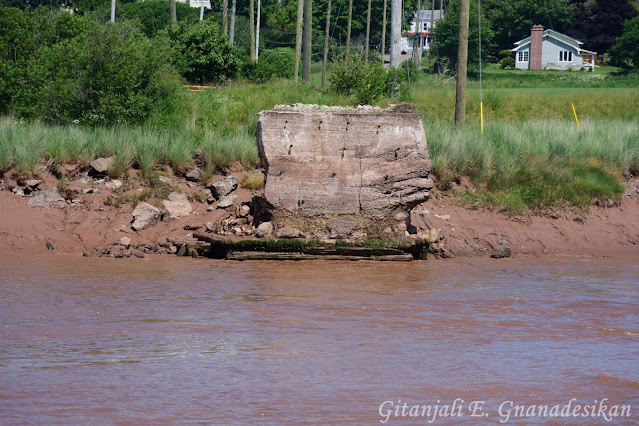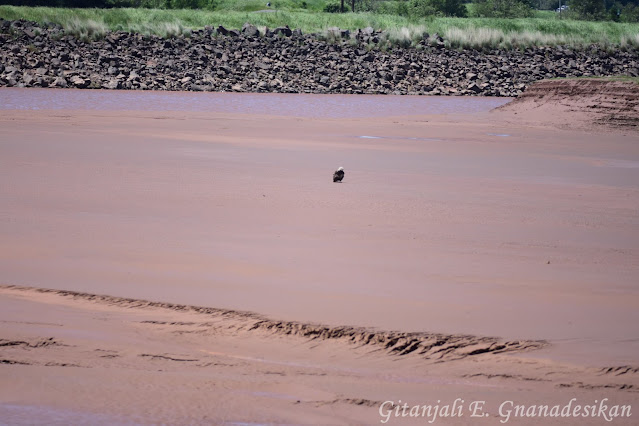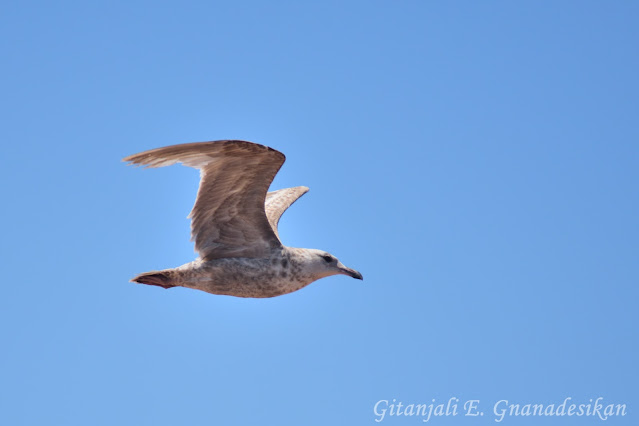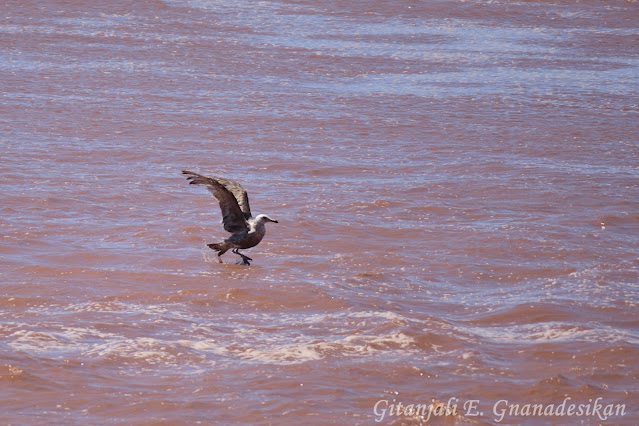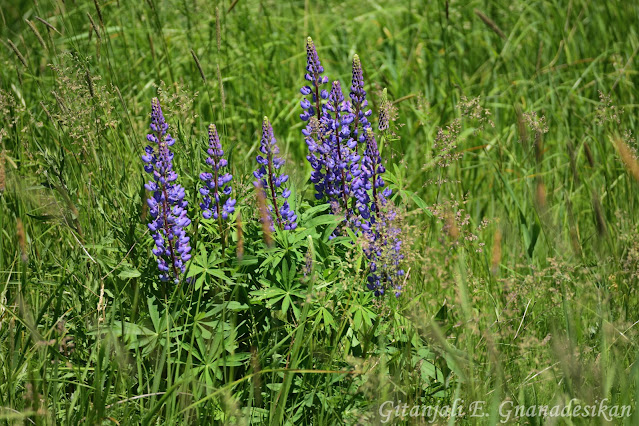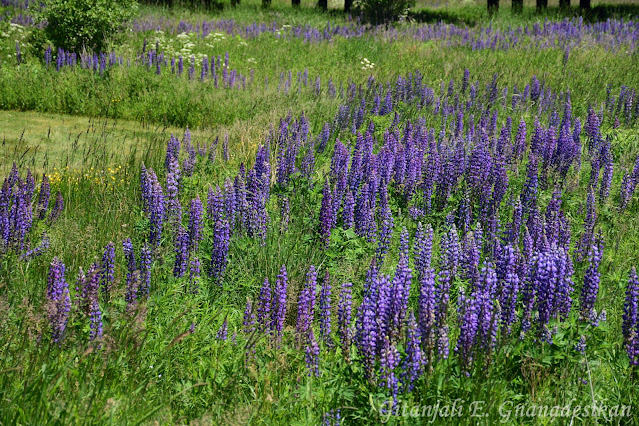On both of the days, the bore was not particularly impressive in terms of height, but it was extremely impressive in terms of speed and power.
Here are a few video glimpses from the first day:
Eleven days later, it looked quite a bit different, flatter, and channeled differently...
Presumably due to a variety of factors ranging from the water in the river and the tide to how the sediments are moved around day after day.
While tidal bore is itself extraordinary, the tides more generally in Bay of Fundy are incredible. In the Minas Basin, which this river drains into, the tides are the highest in the world, reaching a range of 53 ft (16 m)! I photographed the remains of this structure before the tide changed...
And then again, just about 3 minutes after the start of the tidal bore.
We viewed the tidal bore from the Fundy Discovery Site, which is conveniently right off the highway. Here it was on arrival one day...
And just a few minutes later, after the bore had past, the river already much wider. Unfortunately, we didn't have time to watch the tide keep rising.
But both times as we waited for the bore, we had some time to appreciate the local flora and fauna. Starting with this bald eagle (Haliaeetus leucocephalus), who was sitting on the mud flats when we arrived.
Then up and into the grass... (and then eventually off into the distance with their mate).
 |
| Cabbage white (Pieris rapae) |
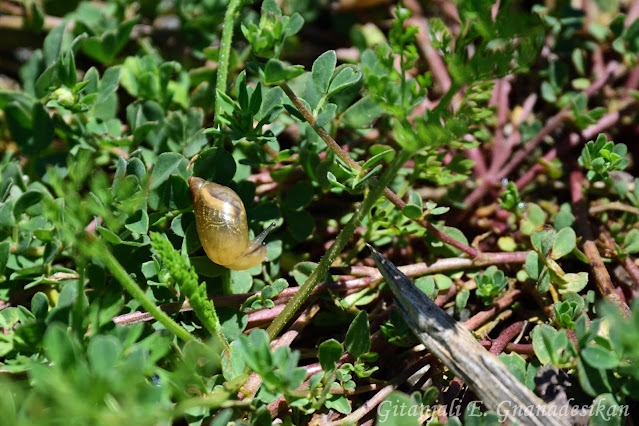 |
| Unknown little land snail |
The herring gulls (Larus argentatus) were both flying around the area...
And bopping around on the changing tide.
The stop also gave me the chance to photograph some of the many lupines that were blooming everywhere.
This particular species is the large-leaved lupine (Lupinus polyphyllus), which is unfortunately invasive in the eastern US and Canada, where it has often displaced native lupine species.
Nevertheless, the large banks of lupines are really beautiful.
And they add lovely splashes of color along all the highways.
That wraps up the trip to Canada. Next up: photos from Costa Rica! (I took way too many...about 3,000 in four days of sightseeing after my conference...so it's taking me a while to sort through them all!)







